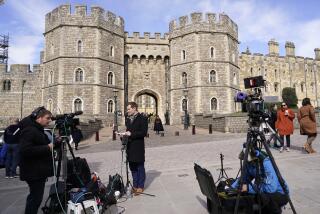French King Henry IV’s head stars in forensic dispute
Doubt — and a reportedly royal severed head — haunts a murky corner of forensic science these days, as researchers squabble over an unearthed packet of mummified remains thought to have belonged to King Henry IV of France.
The mystery has produced a frightful case of regret among two researchers who were part of the first team to investigate the purportedly royal noggin. This week, French pathologist Geoffroy Lorin de la Grandmaison and Leslie Eisenberg, an American forensic anthropologist, wrote to the British Medical Journal and urged the retraction of the 2010 study that first identified the disembodied head as belonging to Henry.
At the heart of the macabre drama is an embalmed head with several vertebrae still attached. The remains were found in 1919 in the Royal Basilica of St. Denis outside Paris and reportedly secreted away by a civil servant. Reappearing almost a century later, the specimen still had its soft tissue and organs intact, right down to the open mouth and partially closed eyes.
On the basis of CT imaging and digital facial reconstruction, French medical examiner and forensic osteo-archaeologist Philippe Charlier and a multidisciplinary team — including Eisenberg and Lorin de la Grandmaison — in 2010 identified the head as that of the charming and rakish monarch known variously as “the Green Gallant” and “Good King Henry.”
Even a mushroom-like growth on his nose and evidence of a pierced right ear seemed to point to King Henry IV. Though beloved by most of his people, the Bourbon monarch was assassinated in 1610 after 21 years on the throne.
That was just the beginning of his misfortune. In 1793, marauding revolutionaries sacked Paris’ churches and desecrated the graves of many a purported royal. Legend had it that Henry’s remains got the same treatment that befell his descendant Louis XVI: Dead or not, it was off with his head.
But researchers from the University of Leuven in Belgium were not so sure the head belonged to Good King Henry.
Obtaining a sample of the mummified tissue, they conducted a genetic analysis and compared it with DNA samples given by three male descendants of the House of Bourbon. Analyzing the Y chromosome of the three descendants, as well as genes that reveal matrilineal descent, they found clear similarities among the three descendants. But none of those matched the DNA of the disembodied head.
The team further compared the Y chromosome taken from the mysterious head with that taken from a blood-soaked handkerchief said to contain the genetic material of Louis XVI. (That “sample” was collected on Jan. 21, 1793, when a spectator at La Place de la Revolution in Paris thrust out the cloth to capture blood gushing from Louis’ headless body.) The two samples did not match.
Though widely used in genealogical research, paternity testing and forensics, the Y chromosome’s pattern of repeated DNA letters is not as definitive a test of genetic relatedness as are the patterns found on other chromosomes. So perhaps this still was Henry’s head?
“Impossible!” declared Jean-Jacques Cassiman, an emeritus professor at the University of Leuven and coauthor of the Belgian team’s study, whose results were published in the European Journal of Human Genetics this month.
The findings came on top of an earlier dismissal by French historian Philippe Delorme. Among other things, Delorme noted that the head bore no sign of craniotomy, as would be typical for a member of the royal family at that time. In such an esteemed person, craniotomy incisions would have been made in life (as a treatment for infection, head trauma and other ills) and in death (as a means to harvest “rondels,” diskettes of bony tissue that were subsequently worn around the neck as an amulet).
Charlier, the lead investigator of the 2010 study, has been stout in defense of his findings. Illegitimacy — not of his methods but among many princelings of the French court — may explain the genetic mismatch, Charlier has argued. Extramarital liaisons among members of the court make it “hopeless,” he said, to ascertain lineage using DNA tests over so many generations.
Such protests have failed to discourage defections from Charlier’s team of researchers. Hence this week’s letter by two of Charlier’s coauthors and two others who have challenged the 2010 findings, saying that “robust scientific arguments ... negate the conclusions.”
“The retraction of the article is now justified, as a rigorous scientific anthropological study should have excluded the hypothesis (and the findings) that the head belonged to” Henry, the four wrote.
Nailing down the identity of long-lost bones is tricky, and disputes among forensic scientists are common, said Alison Galloway, a forensic anthropologist at UC Santa Cruz who has followed, but not been involved in, the royal kerfuffle.
“The original analysis looked good,” Galloway said. But Charlier’s team should have known that its conclusions would be challenged, she said.
“If you had a group of 100 skulls — all men of European ancestry, let’s say — and you had a photograph of a person, about 10 of those skulls could superimpose pretty well on that photograph,” she said. Although facial reconstruction makes for great visuals in a TV drama, “it’s a technique much better used to exclude somebody” than to identify him definitively.
With grieving relatives, criminal defendants and judges looking on, forensic scientists typically stick with conclusions that will hold up in a court of law. Only rarely do their disputes become the object of royal speculation and historical ghost stories.
Charlier’s investigation, and the ensuing fracas, may be more of a divertissement than a serious professional debate, Galloway said. “Why are we so worried about whether it’s Henry’s head?”







